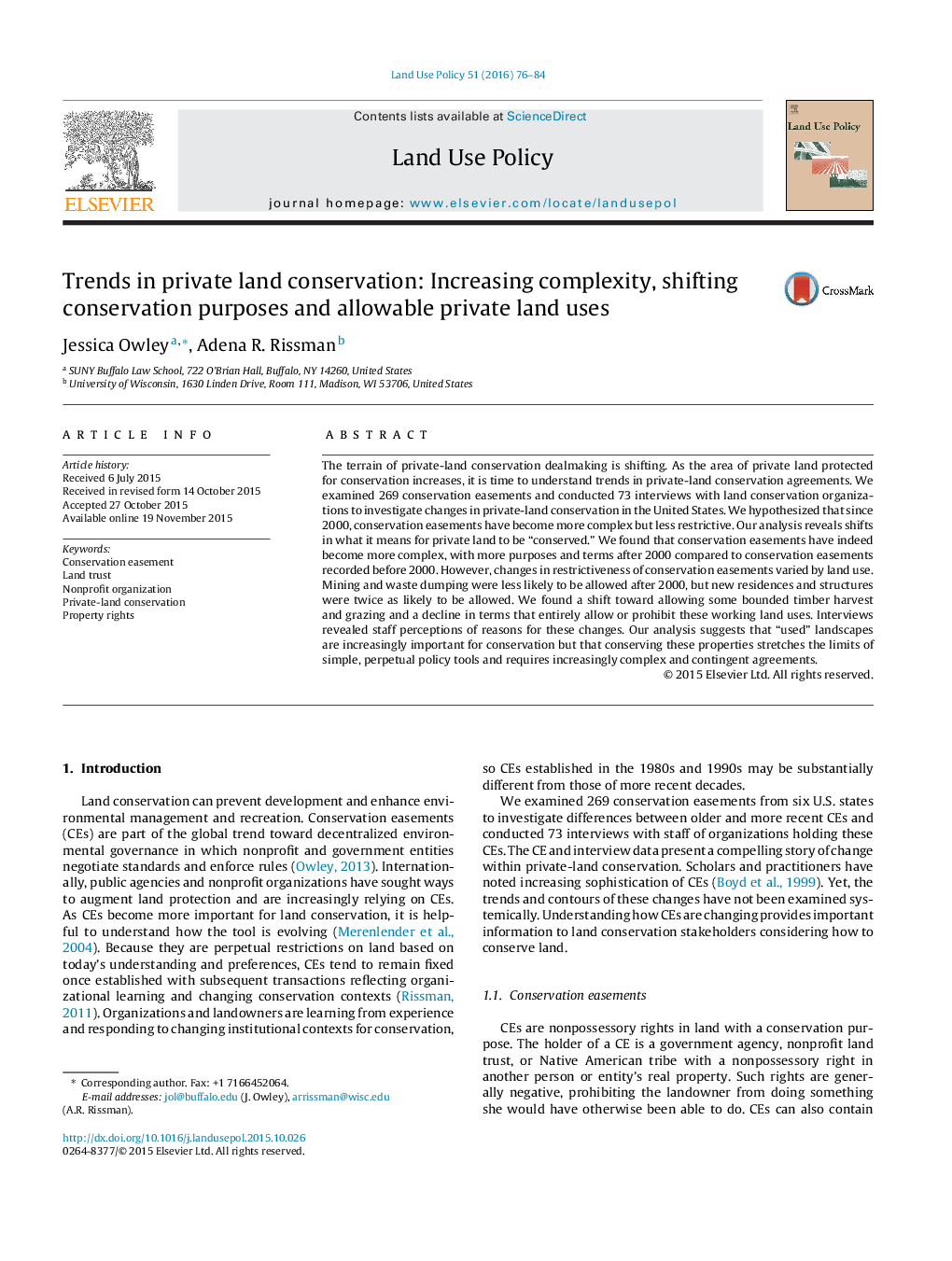| Article ID | Journal | Published Year | Pages | File Type |
|---|---|---|---|---|
| 92896 | Land Use Policy | 2016 | 9 Pages |
•Conservation easement agreements have become more complex with complicated land-use terms.•Increased conservation on working land alters the private conservation landscape.•Using partial-property tools for private land conservation has limitations.
The terrain of private-land conservation dealmaking is shifting. As the area of private land protected for conservation increases, it is time to understand trends in private-land conservation agreements. We examined 269 conservation easements and conducted 73 interviews with land conservation organizations to investigate changes in private-land conservation in the United States. We hypothesized that since 2000, conservation easements have become more complex but less restrictive. Our analysis reveals shifts in what it means for private land to be “conserved.” We found that conservation easements have indeed become more complex, with more purposes and terms after 2000 compared to conservation easements recorded before 2000. However, changes in restrictiveness of conservation easements varied by land use. Mining and waste dumping were less likely to be allowed after 2000, but new residences and structures were twice as likely to be allowed. We found a shift toward allowing some bounded timber harvest and grazing and a decline in terms that entirely allow or prohibit these working land uses. Interviews revealed staff perceptions of reasons for these changes. Our analysis suggests that “used” landscapes are increasingly important for conservation but that conserving these properties stretches the limits of simple, perpetual policy tools and requires increasingly complex and contingent agreements.
